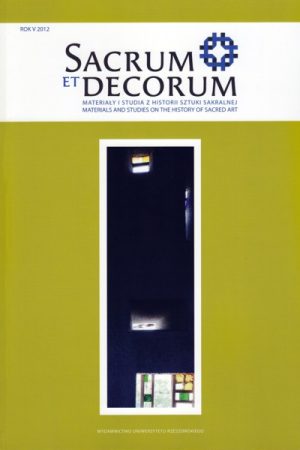Wyspiański, Romańczyk a witraże kościelne Zagłębia i Górnego Śląska
Słowa kluczowe:
Stanisław Wyspiański, Fryderyk Romańczyk, Górny Śląsk, Zagłębie, sztuka polska, sztuka kościelna, witraż, wiek XXAbstrakt
Artykuł dotyczy wpływu twórczości Stanisława Wyspiańskiego na projekty witrażowe Fryderyka Romańczyka przeznaczone do kościołów Górnego Śląska i Zagłębia. W latach 30. i 40. ubiegłego stulecia Romańczyk prowadził w Siemianowicach Śląskich znakomicie funkcjonującą pracownię witrażowniczą, a jego prace cechowało dobre opanowanie warsztatu i wyraźne inspiracje sztuką secesyjną w jej rodzimej młodopolskiej odmianie, w której dużą rolę odgrywają motywy inspirowane lokalną florą polską. Na wstępie artykułu omówiony został również jedyny na terenie obecnego województwa śląskiego witraż zaprojektowany przez Stanisława Wyspiańskiego, niezwykłego wizjonera w sztuce i w teatrze polskim. Witraż ten, znajdujący się w kaplicy Kurii Metropolitalnej w Katowicach i przedstawiający Ukrzyżowanego Chrystusa unoszonego na skrzydłach serafina, zrealizowany został w trzydzieści lat po powstaniu projektu przez Krakowski Zakład Witraży S. G. Żeleński (w prace był zaangażowany Romańczyk) i jest wybitnym przykładem polskiej secesji.
Downloads
Pobrania
Opublikowane
Jak cytować
Numer
Dział
Licencja
Prawa autorskie (c) 2012 Sacrum et Decorum

Utwór dostępny jest na licencji Creative Commons Uznanie autorstwa – Użycie niekomercyjne – Bez utworów zależnych 4.0 Międzynarodowe.
Zgodnie z polityką Open Access autorzy zachowują pełnię praw autorskich do swoich artykułów – bez ograniczeń.
Autorzy mogą deponować swoje artykuły w wybranym przez siebie repozytorium.


